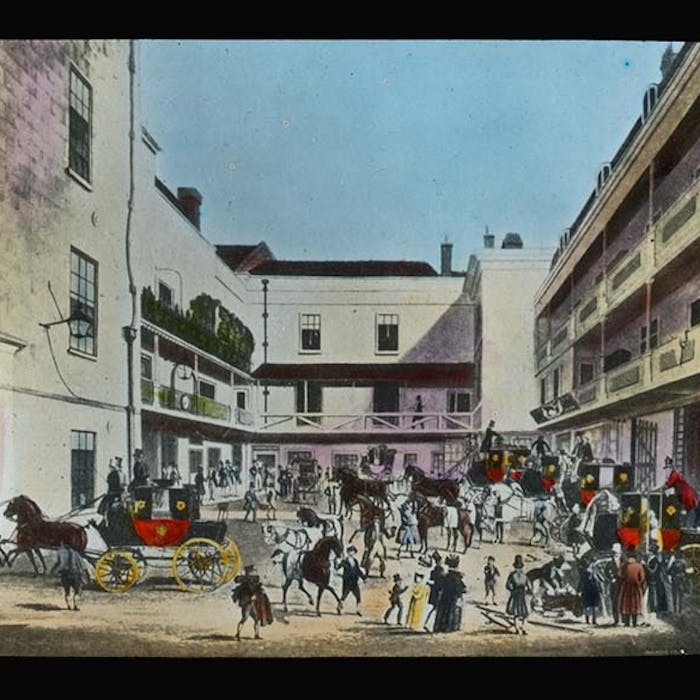
The Mail Coach - delivering the post and passengers
Mail coaches were introduced to Britain in the late eighteenth century, to provide a more speedy and cost effective system of transport for the post, but also to carry travellers around the country.
The previous system had involved less structured operations by 'post boys', subject to frequent mail thefts and a lack of reliability.
John Palmer (1742-1818) of Bath was one of those suggesting the establishment of a mail coach system, an idea which was taken up by Prime Minister William Pitt on the suggestion of Lord Camden.
The young Palmer had joined his father in the theatre business, using 'post-chaises' - horse-drawn closed-body fast travelling carriages - to move actors and scenery quickly between theatres, and it was this concept that he thought could benefit the postal service. It was agreed by Pitt that a test run could be enacted on the 2nd of August 1784, at Palmer’s expense. It ran between Bristol and London and was completed in 13 hours rather than the 36 it had previously taken. Due to this success of the trial more routes were opened up across the country including Scottish and Irish mail coaches, linking to boat services for Ireland (via Holyhead).
The various Post Office directories, and other directories of the time, listed the days for which services were provided, along with the times and coach names where appropriate, and the routes of regular services.
The development of the mail coach system depended in part upon improvements in road building - including macadamisation of road surfaces and the introduction of toll roads. Military factors also played a part in improved road development, with the need for good communications in order to counter the threat of insurgency and invasion.
The mail coach, horses and the driver were all provided by contractors. Competition for the contracts was fierce because it meant status and a regular income in addition to passenger fares. The first mail coaches were poorly built but an improved patented coach, designed by John Besant, was adopted by The Post Office in 1787. Besant, later in partnership with John Vidler of Millbank, enjoyed the monopoly of supplying the coaches.
The coaching networks evolved over time, with routes being extended or changed to suit demand. They wound down from the mid-nineteenth century, with the advent of the railways, which were quicker, more comfortable and could carry bigger loads. The last to go were the cross-country routes.
Some of the companies involved in the mail coach business managed to survive, sometimes through investment in the railways, or by entering into, and developing a new market, such as the provision of feeder services to the railways.
A key feature of the mail routes were the coaching inns along the way, which provided for overnight accommodation, joining and leaving the services and care of the horses. Given the schedules and any potential delays the coaches could arrive, or depart, at all hours of the day or night. A number of former coaching inns are still standing, notably The George, Southwark (near London Bridge), a rare survival of an original layout.
Further reading
Links to external websites are not maintained by Bite Sized Britain. They are provided to give users access to additional information. Bite Sized Britain is not responsible for the content of these external websites.
